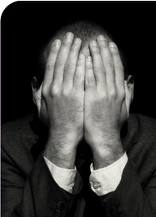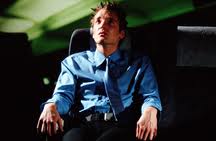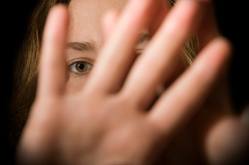Phobias 
Fear can be rational or irrational, but it is still fear, and can become overwhelming, and debilitating. Understanding it and developing strategies can help so much.
Any phobia may produce a state of panic when the sufferer is confronted with the phobic object/situation. A wide variety of physical symptoms are experienced such as nausea, increased heartbeat and jelly legs. For this reason, many people with simple or specific phobias enter into a pattern of avoidance which can vary enormously in severity from someone who would not want to touch a spider, to someone who cannot even look at a picture of a spider in magazines, and therefore has to vet everything they come into contact with. The latter demonstrates just how debilitating even a simple phobia can be.
Some Examples of Phobias
The fear of flying
The fear of flying or aerophobia is an excessive worry about air travel. It is believed to affect one in ten of the population, however some studies suggest that the proportion is much higher. Fear of flying can be linked to the fear of aeroplanes or it could be an aspect of other psychological problems such as panic attacks, claustrophobia or post-traumatic stress disorder. People suffering from fear of flying often suffer increased anxiety and panic attacks at the thought of flying and many avoid air travel as a result of this.
P eople suffering with fear of flying commonly fall into one of two groups. Firstly, some people fear an “internal loss of control”. For such individuals, their fear of flying stems from a fear that they will lose control of their emotions during flight and therefore embarrass themselves in front of fellow passengers. These people may express concern about suffering a panic attack, loss of control of bodily functions or become hysterical. For others, the fear is associated with external factors such as turbulence, bad weather or a fault with the aeroplane.
eople suffering with fear of flying commonly fall into one of two groups. Firstly, some people fear an “internal loss of control”. For such individuals, their fear of flying stems from a fear that they will lose control of their emotions during flight and therefore embarrass themselves in front of fellow passengers. These people may express concern about suffering a panic attack, loss of control of bodily functions or become hysterical. For others, the fear is associated with external factors such as turbulence, bad weather or a fault with the aeroplane.
The reassurance that air travel is one of the safest methods of travel usually does little to reassure the sufferer that air travel is safe and many people will avoid flying at all costs. This avoidance can affect their personal and professional lives, with people being unable to travel for business or to see friends/family.
It is common to find that many people who once flew without any problems can become uncomfortable travellers and go on to develop a fear of flying. For many people when they look back to the time when their fear of flying began they can find that they had quite a lot of stress in their lives. If they took a flight and experienced an ‘out of the blue’ panic attack, they can fear that they will have another next time they fly and so the pattern of anticipatory anxiety and avoidance can begin. One other factor is that some individuals will experience increased anxiety following the consumption of alcohol while on holiday – alcohol withdrawal can sometimes cause similar symptoms to anxiety (e.g. shaky, short of breath, feeling dizzy) and this can trigger increased anxiety and panic attacks in some on the return flight home.
Claustrophobia
Claustrophobia is usually defined as the irrational fear of confined spaces. It can be rational to fear being trapped whe n circumstances carry genuine threat. However, in claustrophobia, people experience fear even when there is no obvious or realistic danger in a particular situation. People who experience claustrophobia generally go out of their way to avoid a long list of confined spaces, including lifts, tunnels, tube trains, revolving doors, public toilets, MRI scanners, and even don’t like to wear crash helmets. Unfortunately, avoidance may reinforce the fear. Claustrophobia may arise from a one-off trauma at any age, developed when the person was a child (for example growing up with one or more claustrophobic parents) or emerge as someone gets older. Around 10% of the population may experience claustrophobia during their lifetime.
n circumstances carry genuine threat. However, in claustrophobia, people experience fear even when there is no obvious or realistic danger in a particular situation. People who experience claustrophobia generally go out of their way to avoid a long list of confined spaces, including lifts, tunnels, tube trains, revolving doors, public toilets, MRI scanners, and even don’t like to wear crash helmets. Unfortunately, avoidance may reinforce the fear. Claustrophobia may arise from a one-off trauma at any age, developed when the person was a child (for example growing up with one or more claustrophobic parents) or emerge as someone gets older. Around 10% of the population may experience claustrophobia during their lifetime.
Agoraphobia
Agoraphobia is a very complex phobia usually manifesting itself as a collection of inter-linked conditions.
For example many agoraphobics also fear being left alone (monophobia), dislike being in any situation where they feel trapped (exhibiting claustrophobia type tendencies) and fear travelling away from their ‘safe’ place, usually the home. Some agoraphobics find they can travel more easily if they have a trusted friend or family member accompanying them, however this can quickly lead to dependency on their carer.
The severity of agoraphobia varies enormously between sufferers from those who are housebound, even room-bound, to those who can travel specific distances within a defined boundary. It is not a fear of open spaces as many people think.
are housebound, even room-bound, to those who can travel specific distances within a defined boundary. It is not a fear of open spaces as many people think.
Monophobia
Monophobics typically fear being left alone as they worry about having a panic attack and having to cope alone without their “support” person. This phobia is often associated with agoraphobia and panic disorder.
Trypanophobia
Trypanophobic sufferers feel panic, revulsion and symptoms of anxiety at the thought of an injection, let alone the sight of a syringe and needle. Sufferers may pass out during the course of having an injection because of intense anxiety.
Blushing phobia
Sufferers find that their blushing is not controllable, and is often severe enough to apparently be noticed by others. The attention that sufferers receive as a consequence of blushing creates more nervousness, and in turn more blushing. This particular phobia is associated with social phobia.
Driving phobia
T here are many different aspects to this phobia, which seems to be becoming more prevalent as roads get busier. Some people find it hard to cope with the speed of modern day road travel, others fear traffic jams and avoid situations when driving where they feel ‘trapped’ and unable to escape. What sufferers have in common is the fear of having a panic attack whilst driving and of losing control of themselves or their vehicle.
here are many different aspects to this phobia, which seems to be becoming more prevalent as roads get busier. Some people find it hard to cope with the speed of modern day road travel, others fear traffic jams and avoid situations when driving where they feel ‘trapped’ and unable to escape. What sufferers have in common is the fear of having a panic attack whilst driving and of losing control of themselves or their vehicle.
If you live in central or north London, contact us now to find out how our phobia service can help.
Call us today for more information or to arrange a counselling or psychotherapy session in central or north-west London or Elstree (covering Bushey, Radlett, Watford St Albans and the surrounding areas)


